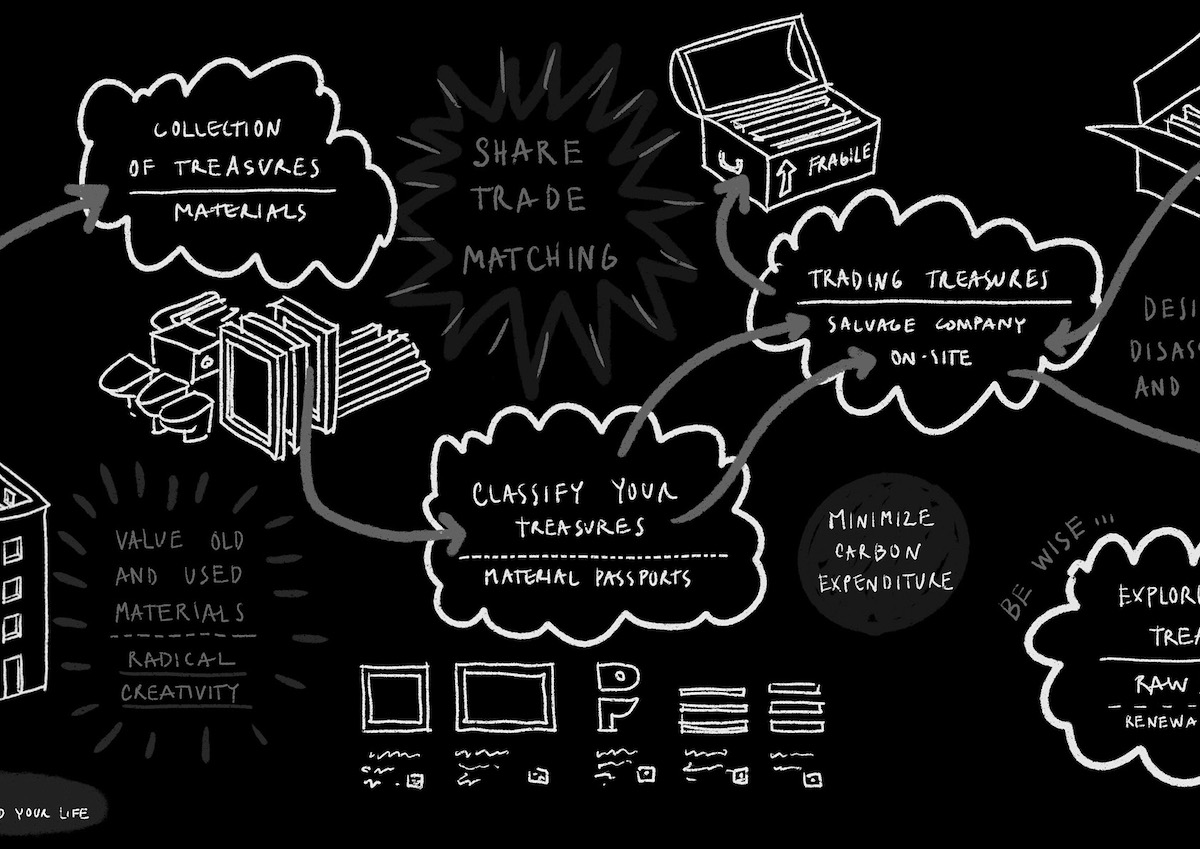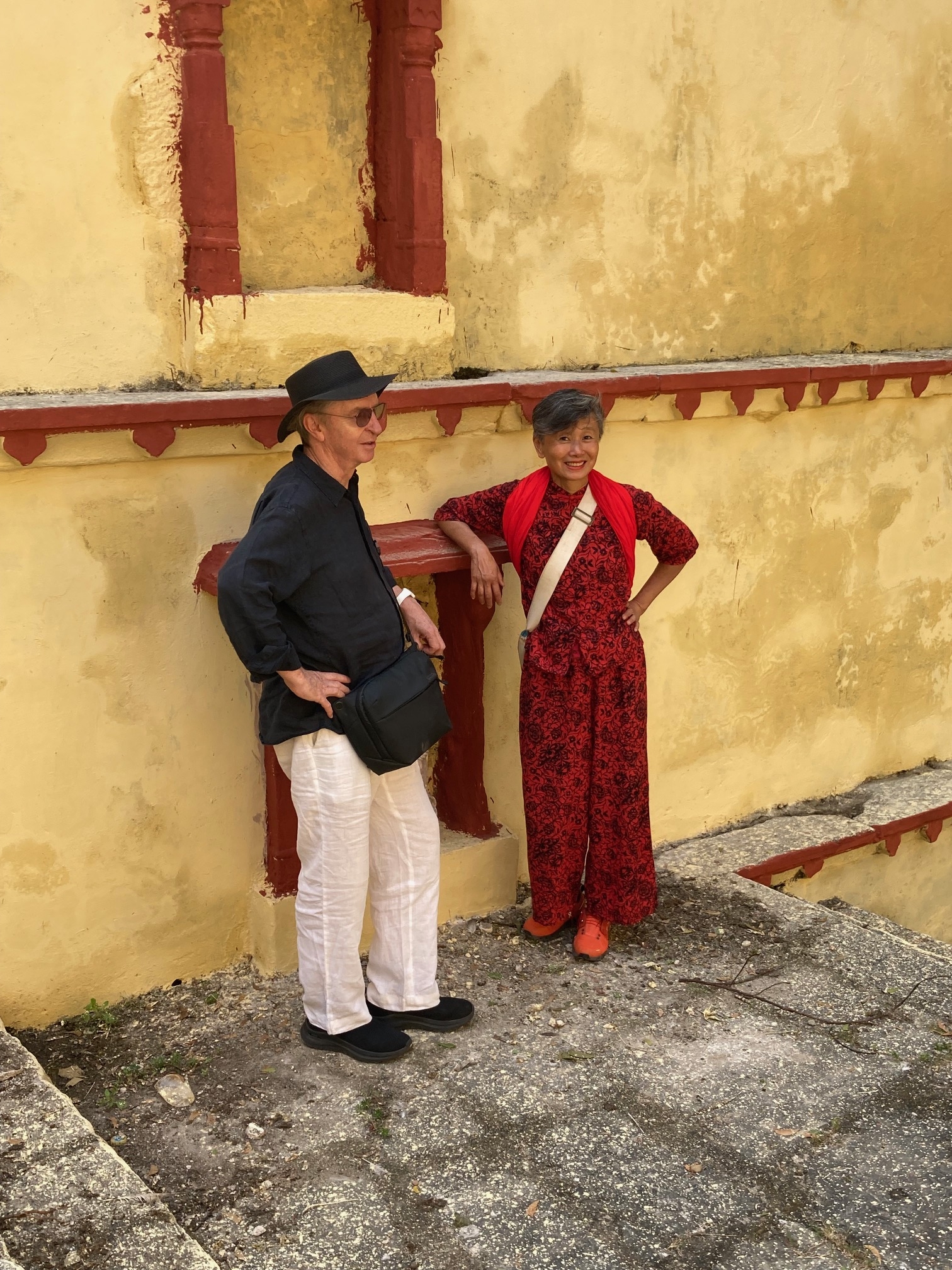Within Sir John Soane’s Museum artists Langlands & Bell reflect upon architecture’s capacity to bear witness to the relationships that define society
The exhibition’s title, ‘Degrees of Truth’, refers to buildings as truth tellers, through which we can understand society’s ideals and motivations. It is the latest in a series of visual discourses where work is displayed across Sir John Soane’s Museum, and is described by its curator, Owen Hopkins, as both a formal dialogue and a conceptual, cultural and intellectual one. The Langlands & Bell pieces selected for display span four decades and include two conceived especially for this exhibition: ‘Grand Tour’, a series of chair-vitrines, their starfish backs inspired by Soane’s own use of the motif in a number of ceilings, and ‘Globe Table’. There is no prescribed route through the exhibition.
Langlands & Bell at Sir John Soane’s Museum
At a press briefing at the museum, Langlands & Bell spoke about the themes that they explore together.
Nikki Bell: “Our art is about relationships, whether it’s personal or political, social or cultural, we are interested in the way relationships between people, and the ways we all live and work together, are expressed in our surroundings.”
Ben Langlands: “We see our work as an intuitive and poetic exploration of the structures that we build and inhabit, and the myriad connections between them. Everything we construct as people, from furniture to buildings to cities, to air, sea and space routes, and now especially to today’s algorithms and information systems, evidences our relationships and how we prioritise them.”
Langlands & Bell, ‘Conversation Seat’, 1986. Artists’ collection.
NB: “As furniture mediates between the body and the building, so it reveals much about how we use architecture, whether we are visiting someone’s home, an office, a school, a theatre or a prison, the furniture tells us much about who the occupants are and what goes on there.”
BL: “Sculptures like ‘Conversation Seat’, which we made in 1986 and which is upstairs in the South Drawing Room, and ‘Interlocking Chairs’ in the North Drawing Room, which we made in 1995, for us explore ideas of coexistence and the possibilities of communication in the relationship between two people. In some ways these works have been seen as portraits of our collaboration.”
Langlands & Bell, artists’ maquette for ‘Grand Tour’, 2020. Artists’ collection.
NB: “’Grand Tour’, the new installation we have made here for the Library Dining Room explores the Grand Tour made by the young John Soane in 1778 to 80. This was his journey to visit and experience many of Europe’s most significant architectural sites and acquaint himself at first hand with the highlights of our common European cultural heritage. He drew on these experiences for the rest of his life.”
BL: “The seven chairs contain architectural models that we’ve made of buildings that Soane is known to have visited and admired, like La Scala Opera House in Milan, and the Temple of Vesta at Tivoli. There are also buildings that we imagine he would visit if he were making the Grand Tour today, such as the Bourse de Commerce/Collection Pinault which is being converted at the moment in Paris by Tadao Ando, and the Generali Tower in Milan by Zaha Hadid. The chair backs are based on the starfish vault design that Soane developed and used in many of his buildings; there are several in this museum as well as the Bank of England.”
Langlands & Bell, ‘Globe Table’, 2020. Artists’ collection.
NB: “The Breakfast Parlour next door is the heart of the museum and the pivot around which the private and public worlds of Sir John Soane still turn. It is one of the museum’s most iconic spaces and here you will find ‘Globe Table’, a new sculpture based on Soane’s breakfast table but with an abstract globe at its centre that you can rotate in any direction to reveal a complex web of the world’s cities and the major air routes that connect them: an architecture of the skies, global circulation, communication and exchange.”
Langlands & Bell, ‘Facade Berlin’, 1999 (ph: Steve White). Private collection.
BL: “There are several themes in the exhibition, implicit or explicit. The Breakfast Parlour’s south wall is full of medals and references to Napoleon and the geo-strategic political relations of Europe at that time. Soane was obviously very interested in what was going on politically in Europe and having made the Grand Tour as young man he was one of the last people to be able to do so before the Napoleonic Wars when travel in Europe became possible. People could come here and learn about Europe but they couldn’t travel themselves to see the buildings that he had seen. He was acutely aware of these things happening on the Continent and today our relationship with Europe is again something we are all thinking about; there are very profound changes going on.
We believe that truth crystallises with the construction, display and interaction of buildings and art works. In the new worlds that we are creating digitally, truth is contested, but art and architecture always enact and reflect reality. This is one reason why we choose to preserve an protect certain buildings, whether it’s the Palace of Versailles, the slave castles of Ghana, Auschwitz or Shakespeare’s house in Stratford-on-Avon, these buildings are both formed by and witness to events. They convey a kind of truth about these events which is incontrovertible. When you visit these places, you become immediately aware what was going on at the time they were built, why they were built and what they were intended for. That’s what we mean by buildings crystallising truth.”
Langlands & Bell, ‘Wind-Dried Whippet’, 1982. Artists’ collection.
NB: “As well as being his home, where he and his family lived, Soane based his professional practice here. In addition to the servants looking after the family’s daily needs, there were architectural employees, students and technicians working on his projects. Like us, Soane knew that you can change your life by changing your environment, so he built and rebuilt these houses numerous times, adjusting and expanding them on each occasion, and the houses became a laboratory where he could test his ideas and designs.”
Degree of Truth continues at Sir John Soane’s Museum, London, until 31 May 2020.



























